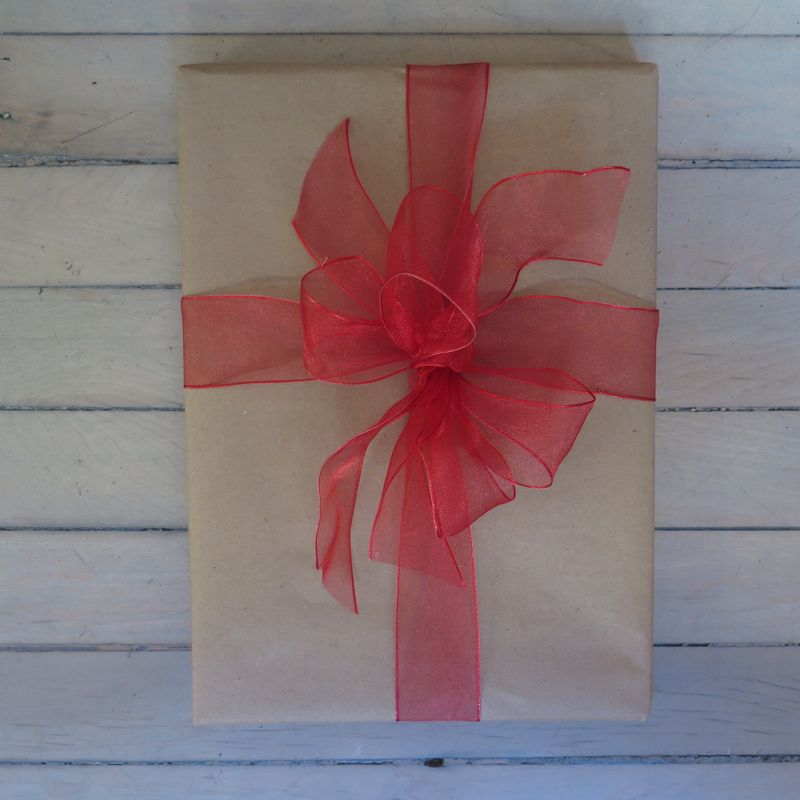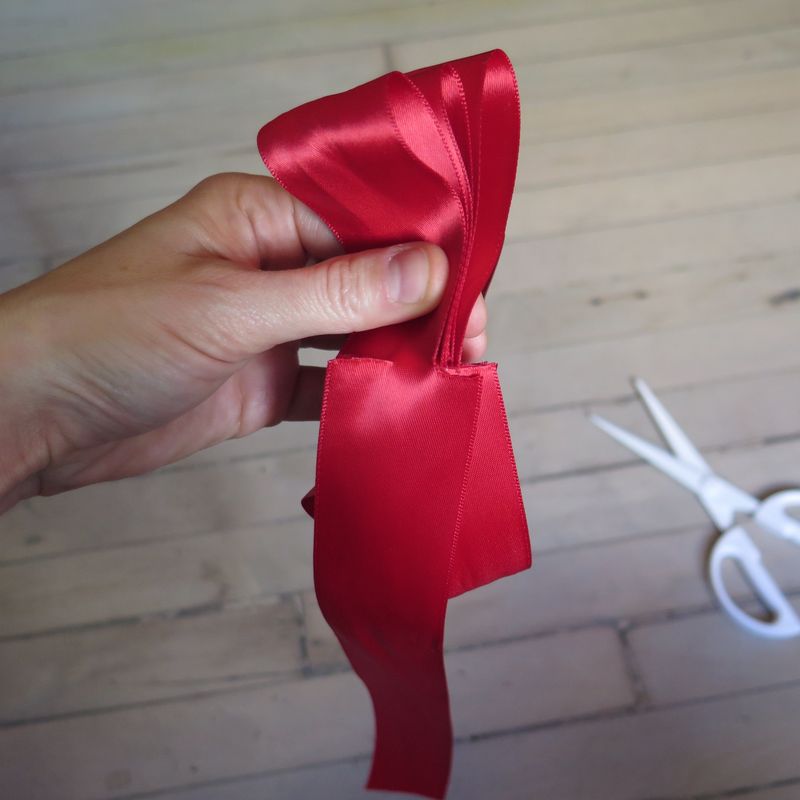As a high schooler, I earned my holiday spending cash by gift wrapping at a fancy men's clothing store. The boxes were huge, the papers thick and ornamental in design, and the ribbons were all silk (which made for peppy round bows like curlers). We were taught to gift wrap with such discipline (There was a training period!) that we forgot to be teenage girls; creasing every corner of the paper, folding and taping so that the ends of the paper lined up exactly with the edges of the box, they might as well have been snapping at us with whistles.
But when it came to bows, we went wild—wild, I tell you—by doubling the colors and looping loops so huge we went through multiple spools in a day. What did I learn, besides that there are easier ways to earn a buck and that silk ribbon is expensive? Silk ribbon wants to be springy, and there is a best way to tie it.
Which got me thinking: What about other, more affordable ribbons?
I tested tying with grosgrain, satin, and wired nylon to find the best bows for each. To create an even playing field, I started out by tying all three ribbons (each about 1.5" wide) in my trusty method that worked so well for standard silk ribbon:

Ribbon 1 is tied around the box and knotted; ribbon 2 (the bow!) is pinched together in one hand, soon to be secured on the box.
- Tie a piece of ribbon about your box and knot it where you want the bow.
- Fold a second length of ribbon back and forth (those will be the loops), pinching it between your fingers in the middle (that will be the knot).
- Secure the bow by tying the loose ends on the box around the pinched part.
I created 6 loops in each bow, and they turned out like this (cute-ish, but not their best selves):
So I took it upon myself to figure out some improvements, by considering what the merits of each ribbon were and how to maximize them. Here's what I learned:
Wired Nylon
Wired ribbon is forgiving; it has invisible, bendy wire woven into the edges, so it's easy to shape (i.e., make prettier) once your bow is complete. And this wired nylon has an airiness to it, begging to be fluffed and puffed and pinched. Knotting it actually added volume to the final bow, and the tied part can be covered up by shaping the loops.


Left (before): a 4-loop wired nylon ribbon; right (after): a much flufflier 6-looper.
My first go at this bow was admittedly sloppy (above, left)—I meant to make 6 loops but had actually only done 4, and as you can see it's a little raggedy. To tighten things up, I used the standard pinching method detailed above but added in those lost loops, and also made them smaller (smaller loops = perkier) so it would be fuller (above, right). As always with wired ribbon, futzing with the finished bow is a good idea.
Satin Ribbon


Left (before): crushed satin ribbon; right (after): perky satin bow.
Satin ribbon is thick, shiny, and smooth (with many of the merits of silk without the price tag), but it doesn't take well to knotting, which makes it pinched, sloppy, and flat rather than fluffy—with too much focus on the knot instead of the bow. To lessen the tension around the knot, I made small slits on both sides of the bow right where it gets tied to the package, and also chose to make the loops a little smaller. When I secured this bow to the box (above, right), the loops were much more spritely and there were no signs of crushed ribbon (the original bow is above, left).


Using sharp scissors, cut a little slit on both sides of the folded satin ribbon before securing the bow to the box.
Grosgrain Ribbon
Grosgrain is one of my favorite ribbons, but I think it's undervalued as a bow-tying ribbon (more frequently used for decorative purposes in clothing-making) because it's so stubborn. Unlike wired ribbon and satin ribon, grosgrain is hardly smooth and springy; it's ribbed, matte, and a little bit like paper.


Left (before): a knot-heavy grosgrain bow; right (after): a simple shoelace bow tied from the ends ot the original ribbon.
As you can see, the pinch and tie method (above, left) did not result in an appealing bow—the knot was so massive and gnarled that it was taking all the attention (the horror). It was clear to me that one less knot was in order.

Use the ends of your wrapping ribbon to tie a one-know shoelace bow (rabbit-ears style).
Instead of making a separate bow out of grosgrain and attaching it to a tied ribbon, be sure the original ribbon is extra-long on both ends and then use those ends to tie a simple shoelace bow, making two loops and then knotting them together. Here are the finished bows!
It's wrapping season—hooray! (Just me?) What's your go-to ribbon and how do you tie a bow?
from Food52 http://ift.tt/1kWrF3B
No comments:
Post a Comment